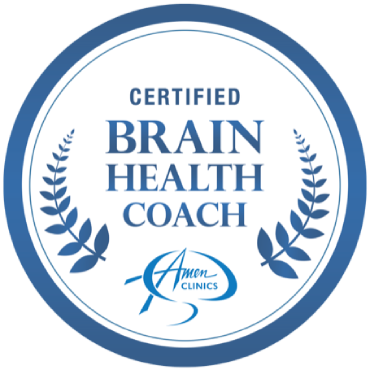Regular exercise not only improves physical fitness but also plays a crucial role in maintaining and even increasing brain volume.
Your brain is your body’s most intricate organ, operating like a command center, orchestrating countless functions essential for your daily life.
At the core of understanding brain health we begin with the concept of brain volume – a critical metric that encapsulates the size and capacity of this vital organ. Brain volume refers to the total amount of space occupied by the brain’s structures, including gray matter, white matter, and cerebrospinal fluid.
Essentially, it represents the overall size and mass of the brain. This measurement is often quantified through neuroimaging techniques such as volumetric analysis of an MRI scan, or an FDG-PET scan which provide detailed images and measurements of brain structures.
Significance of Brain Volume
Understanding brain volume is crucial as it serves as a fundamental indicator of brain health and functionality. A larger brain volume ‘typically’ correlates with higher cognitive abilities, including memory, reasoning, and problem-solving skills. Additionally, adequate brain volume is essential for maintaining optimal neurological functions and overall well-being.
Changes in brain volume over time can signify various underlying conditions or health issues. For example, a decline in brain volume may be associated with aging, neurodegenerative diseases such as Alzheimer’s, or neurological disorders like multiple sclerosis. On the other hand, certain lifestyle factors, such as regular physical activity, cognitive stimulation, nutritional status and a brain-friendly diet contribute to preserving, and YES! even increasing brain volume.
The Link Between Exercise and Brain Health
Exercise isn’t just about physical fitness; it’s also a powerful tool for enhancing your brain’s health and function. Scientific research has consistently shown a strong correlation between regular exercise and improved cognitive function. One of the key ways exercise benefits the brain is through the promotion of neurogenesis and neuroplasticity.
Neurogenesis refers to the process of generating new neurons in the brain, particularly in the hippocampus, which is your learning and memory centre. Exercise has been found to stimulate neurogenesis, leading to an increase in the production of new brain cells. This, in turn, can enhance cognitive function, improve memory, and reduce the risk of age-related cognitive decline.
Types of Exercise That Increase Brain Volume
Aerobic Exercise: Activities like running, swimming, and cycling are excellent forms of aerobic exercise that have been shown to significantly benefit mental health. Aerobic exercise increases blood flow to the brain, delivering oxygen and nutrients essential for optimal function. It also promotes the release of neurotransmitters and growth factors that support neurogenesis and neuroplasticity. Research suggests that regular aerobic exercise can improve cognitive function, enhance memory, and reduce the risk of cognitive decline.
Strength Training
While often associated with building muscle strength, strength training also offers notable benefits for brain health. Lifting weights or performing resistance exercises can stimulate the release of growth factors that support the growth and repair of brain cells. Additionally, strength training improves blood flow and oxygen delivery to the brain, promoting overall brain health and cognitive function. Studies have shown that incorporating strength training into your exercise routine can enhance memory, attention, and executive function.
Mind-Body Exercises
Mind-body exercises like yoga and tai chi offer a unique blend of physical activity, mindfulness, and relaxation that can have profound effects on brain health. These practices engage both the body and mind, promoting stress reduction, emotional well-being, and cognitive function. Research suggests that regular participation in mind-body exercises can improve brain structure and function, enhance memory and attention, and reduce the risk of cognitive decline associated with aging.
Tips for Incorporating Exercise into Daily Routine
Incorporating exercise into your daily routine doesn’t have to be daunting. With some practical strategies and determination, you can make physical activity a regular part of your life. Here are some tips to help you get started and stay motivated:
1. Set Realistic Goals
Begin by setting achievable exercise goals that align with your fitness level and schedule. Start with small steps, such as taking a brisk walk for 30 minutes a day, and gradually increase the intensity and duration as you build stamina.
2. Find Activities You Enjoy
Experiment with different types of exercise to discover what you enjoy the most. Whether it’s cycling, dancing, or playing a sport, choosing activities that you find fun and engaging will increase your likelihood of sticking with them in the long run.
3. Schedule Exercise Sessions
Treat exercise like any other important appointment by scheduling regular workout sessions into your calendar. Designate specific times each day for physical activity and prioritize them just as you would any other commitment.
4. Stay Flexible
Be flexible with your exercise routine and adapt it to fit your changing circumstances. If you’re unable to stick to your usual workout schedule, find alternative ways to keep moving, such as taking the stairs instead of the elevator or doing bodyweight exercises at home.
5. Reward Yourself
Celebrate your exercise achievements and milestones along the way. Treat yourself to a relaxing massage, infra red sauna or a dip in the ocean for recovery! The improvement in your mood & cognitive state are rewards in & of themselves. Staying active optimises the quality of your life – for you & for those you love!






